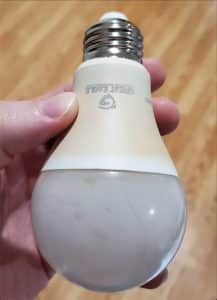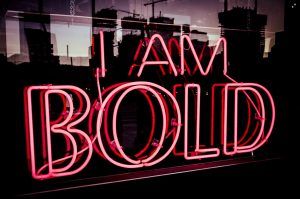
Table of Contents
ToggleIn this post, I will cover LED safety. LED neon signs have revolutionized how businesses and individuals light up their spaces. They are the go-to choice for many, but the safety aspects of LED neon signs and the LED lights used in those signs are poorly understood.
Let’s dive deeper into the world of LED lights, their safety aspects, and anything we should be concerned with.
LED neon signs are a modern take on traditional neon signs, offering many benefits, including energy efficiency, durability, and safety. They’re versatile and available in many colors and shapes, making them perfect for diverse applications – from business advertising to improving home interiors.
LED neon signs use LED lights in their manufacture, so we should assess the safety of LED lights to determine the safety of modern neon signs.
An LED light is a light-emitting diode – LEDs (light-emitting diodes) are electrical semiconductors that are supplied with an electrical current and emit light.
LED lights are lauded for their energy-saving capabilities. They consume less power, which translates to reduced electricity costs and a smaller carbon footprint. This makes LED lights, and therefore LED neon signs, an environmentally-friendly choice, aiding in conserving our planet’s resources.
LED lights are long-lasting, durable, and cheaper to manufacture. LED lights are designed to be robust. Some LED lights have a life expectancy of up to twenty years, minimizing the need for frequent replacements. This extended lifespan makes LED neon signs a cost-effective solution for long-term usage.
LED lights are user-friendly and require minimal maintenance. Their flexible design allows them to take on various shapes, broadening their application possibilities. Plus, they can be remotely controlled, enabling users to adjust their brightness levels conveniently.
Though LED lights offer numerous benefits, they might have a higher initial cost than traditional neon lights, hollow glass tubing filled with argon or neon gas (read our fun facts about neon). They might also require professional installation and maintenance, adding to their overall cost. However, the long-term benefits, such as energy savings and durability, often offset these initial costs.
LED lights operate at a lower voltage than traditional neon lights, making them safer to handle. They don’t emit hazardous gases or excessive heat, making them safe for indoor and outdoor installations.
LED lights are designed for durability. With proper care, they can last for over 35 years, almost double the lifespan of traditional neon lights. Their low heat emission also adds to their safety, making them ideal for crowded spaces.
Having said that, LED lights do “burn out” – typically, they slowly dim and stop working. Under certain circumstances, when exposed to water, LED lights and LED light bulbs, for example, will actually burn out in the literal sense. See below for an example of an actual LED light-up sign burning out.
This is what a burned-out LED neon sign looks like
This is what burned-out LED bulbs look like.

If an LED light fails, unplug it immediately and make sure the area is safe. Once the LED light has been turned off for a few minutes, it can be safely removed and either disposed of or taken for repair—this might be important as it could be part of an LED neon sign.
LED neon signs are typically more costly to repair than to replace the entire sign.
There are three main reasons complicating finding a repairer:
Cleaning LED lighting is straightforward, thanks to the LEDs being encased in a silicone sleeve. Regular cleaning can keep the signs looking brand new for a long time. However, using the right tools and high-quality LEDs is crucial to avoid potential damage during the cleaning process.
We try to keep it simple and recommend dusting on a regular schedule. Here is our more comprehensive guide to maintaining LED neon signs and lighting.
LED lights are known for their low heat emission, making them a safer option for businesses and homes. They are safe to touch even when they have been on for hours, in direct contrast to regular light bulbs, which get very hot after only 5 minutes.
One thing you can consider when buying a custom neon light sign is making the sign and lights weatherproof – this is vital if the sign is going to be used outdoors. A waterproof and durable design makes them suitable for various environments, even harsh ones, without risk of damage.
Humans are exposed to blue light with natural daylight. LED lights replicate the light spectrum of the sun’s rays—the UV-A and UV-B are all the same as the artificial lighting from LED lights (yes, artificial, but not different from real sunlight).
While LED lights are generally considered safe, high-intensity blue light exposure can lead to macular degeneration. Unlike natural light, artificial blue light exposure in the late or even early evening hours can impact the body’s circadian rhythm, leading to sleep issues and other human health effects.
To ensure the eyes remain healthy and prevent eye strain, we recommend that blue lights be minimized or turned off in the early evening. Using blue light filters on electronic devices, including phones and computers, will create less blue light and can reduce health risks—these software changes change the color tones on the screen and reduce the amount of blue light emitted.
LED lights emit high amounts of blue light, which can cause retinal damage and other vision problems if not managed properly. It’s recommended to avoid direct exposure to LED lights and signs and use eye protection when necessary.
We recommend turning off the LED lights about one hour before going to bed to help with circadian rhythms and enhance sleep patterns.
LED lights are known to have a low environmental impact. They are energy-efficient, use recyclable materials, and don’t require gas refills. Moreover, LED lights don’t get very hot, making them safer to operate than other lights.
LED Light-Up signs can be customized for various applications, from advertising to event decor. They offer many color options, allowing you to maintain your brand’s integrity. Their versatile design allows them to be used in various ways, adding to their appeal.
In conclusion, LED lights, and therefore LED neon signs, are safe, energy-efficient, and versatile lighting solutions. While they may require a higher initial investment, the long-term benefits they offer make them worthwhile. LED lights have undeniably paved the way for safer and more efficient lighting solutions, making them a preferred choice for many.
Here is a more in-depth article answering if neon signs are dangerous?
If you want to create custom LED lighting, please use the link below to contact our team.
Christopher is our main author, with over 10 years working with businesses and consulting online. Christopher has a deep understanding of LED lights, LED neon flex, and neon signs and how they can be best used to help business, home, and event decor.






Neon By Design is America’s best LED neon sign maker that focuses on custom LED neon signs for business, home and event décor.
Neon By Design
171 Branham Ln
Ste 10 POB 1059
San Jose
CA 95136